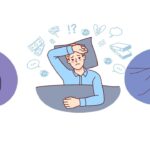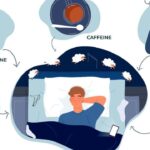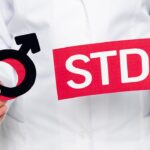Stroke is ranked as the second leading cause of death in the world. Many people might wonder what it feels like to have a stroke so that they can recognize and learn immediate and effective preventive methods since a stroke can happen without any warning and is life-threatening. This article will prepare you with the information needed in case you the person next to you experience a brain attack.
What does it feel like to have a stroke?
A stroke, or a brain attack, happens when there is a blood clot in the brain, interrupting the blood flow to any part of the brain. When a stroke occurs, the patient will have different symptoms regarding the location in the brain and the severity of the damage. However, the common features of stroke symptoms are they typically happen fast and without warning. You might see the following signs when you experience a stroke:
1. Sudden severe headache
In many cases, the patient suddenly has a severe headache and then falls into a deep coma without any previous signs.
2 Difficulty speaking or difficulty understanding speech
The patient suddenly cannot say or only express what he wants to say in an unclear and stuttering way.
3. Drooping eyelids, sudden numbness in the face, arm, leg, or numbness on one side of the face
Brain damage hurts the nerves distributed on the face, causing the eyelids to droop. At the same time, the patient experiences numbness on one side of the face, difficulty moving facial muscles, a distorted mouth, and a deviated philtrum.
4. Numbness and weakness on one side of the body
Feelings of numbness and weakness in limbs are also quite common in people who have had a stroke. The patient may be walking and doing daily postures but suddenly feels numb or weak, then collapses.
5. Difficulty walking or losing balance
If the brain damage affects the nerves that control the motor, the patient may have difficulty moving or maintaining balance.
6. Difficulty seeing with one or both eyes
Patients may suddenly have blurred or lost vision in one or both eyes.
Besides headaches, other symptoms of stroke often do not cause pain; therefore, sometimes the patient is not aware of the severity the other symptoms might develop. You should be aware and seek immediate medical care when experiencing that onset of symptoms.
How to recognize people having a stroke?
F.A.S.T. is one of the commonly used “tools” to help identify a stroke. If you suspect someone has any medical signs, you can evaluate according to this rule as follows:
- F (- Face): Stroke patients often have facial distortion and philtrum deviation. If you suspect a person is having a brain attack, ask the person to smile, then watch to see if their face droops.
- A (- Arm): To test the flexibility of the arms, you can ask the person to raise both arms. In cases of stroke, his arms may lose control to raise high or to hold for a long time.
- S (- Speaking ability): When asked to repeat a simple phrase, someone with a stroke cannot pay attention to repeating it or might speak with a lisp or unusual voice.
- T (- Time): Call an emergency immediately if you observe any of the mentioned signs.
Treatment
If you feel the signs of a stroke coming, call an ambulance or tell a loved one immediately to be taken to the hospital as soon as possible.
If you encounter someone with symptoms of a stroke, quickly seek for emergency and perform first aid measures immediately:
- If the patient is awake, lay him on a flat surface and loosen their clothing.
- If the patient is drowsy or nauseous, have the patient lie on his side and remove all phlegm to help clear the airway and avoid vomiting.
- If the patient has a seizure, let the patient hold a chopstick wrapped in cloth in his mouth to avoid biting the tongue.
- If the patient stops breathing, artificial respiration might be performed.








